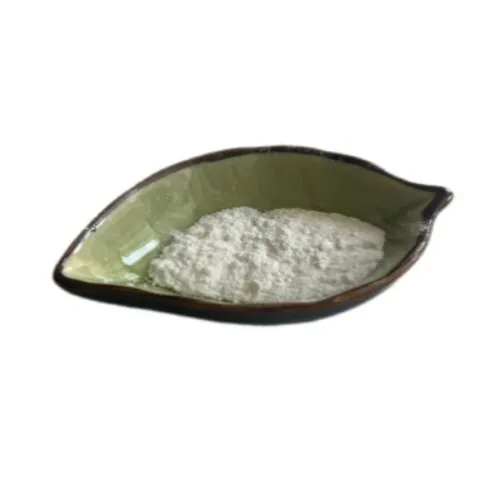Warning: Undefined array key "title" in /home/www/wwwroot/HTML/www.exportstart.com/wp-content/themes/1198/header.php on line 6
Warning: Undefined array key "file" in /home/www/wwwroot/HTML/www.exportstart.com/wp-content/themes/1198/header.php on line 7
Warning: Undefined array key "title" in /home/www/wwwroot/HTML/www.exportstart.com/wp-content/themes/1198/header.php on line 7
Warning: Undefined array key "title" in /home/www/wwwroot/HTML/www.exportstart.com/wp-content/themes/1198/header.php on line 7
- Afrikaans
- Albanian
- Amharic
- Arabic
- Armenian
- Azerbaijani
- Basque
- Belarusian
- Bengali
- Bosnian
- Bulgarian
- Catalan
- Cebuano
- China
- China (Taiwan)
- Corsican
- Croatian
- Czech
- Danish
- Dutch
- English
- Esperanto
- Estonian
- Finnish
- French
- Frisian
- Galician
- Georgian
- German
- Greek
- Gujarati
- Haitian Creole
- hausa
- hawaiian
- Hebrew
- Hindi
- Miao
- Hungarian
- Icelandic
- igbo
- Indonesian
- irish
- Italian
- Japanese
- Javanese
- Kannada
- kazakh
- Khmer
- Rwandese
- Korean
- Kurdish
- Kyrgyz
- Lao
- Latin
- Latvian
- Lithuanian
- Luxembourgish
- Macedonian
- Malgashi
- Malay
- Malayalam
- Maltese
- Maori
- Marathi
- Mongolian
- Myanmar
- Nepali
- Norwegian
- Norwegian
- Occitan
- Pashto
- Persian
- Polish
- Portuguese
- Punjabi
- Romanian
- Russian
- Samoan
- Scottish Gaelic
- Serbian
- Sesotho
- Shona
- Sindhi
- Sinhala
- Slovak
- Slovenian
- Somali
- Spanish
- Sundanese
- Swahili
- Swedish
- Tagalog
- Tajik
- Tamil
- Tatar
- Telugu
- Thai
- Turkish
- Turkmen
- Ukrainian
- Urdu
- Uighur
- Uzbek
- Vietnamese
- Welsh
- Bantu
- Yiddish
- Yoruba
- Zulu
aug . 19, 2024 12:04 Back to list
Conversion of Propylene Oxide into Propylene Glycol Through Chemical Processes and Reactions
The Conversion of Propylene Oxide to Propylene Glycol An Overview
Propylene oxide (PO) is an important chemical intermediate used in the production of various chemicals, including propylene glycol (PG). The conversion of propylene oxide to propylene glycol is a significant process in the chemical industry, particularly due to the versatile applications of PG in pharmaceuticals, food, cosmetics, and antifreeze formulations. This article will explore the methodologies involved in this conversion, its relevance, and the resulting benefits.
Understanding Propylene Oxide
Propylene oxide is a colorless and flammable compound, primarily produced by two methods the chlorohydrin process and the epoxidation of propylene. As an epoxide, it features a three-membered cyclic ether structure that facilitates various chemical reactions. Due to its reactive nature, PO can undergo hydrolysis, where it reacts with water to produce propylene glycol.
The Conversion Process
The conversion of propylene oxide to propylene glycol can occur through two main pathways a direct hydrolysis reaction and an indirect method involving the intermediate formation of other compounds. The direct hydrolysis process is the most common, involving the reaction of PO with water under suitable conditions.
1. Direct Hydrolysis In this method, propylene oxide is treated with water in the presence of a catalyst, usually an acid or a base. The reaction is typically carried out at elevated temperatures and pressures to enhance the yield and efficiency. The chemical reaction is as follows
\[ \text{C}_3\text{H}_6\text{O} + \text{H}_2\text{O} \rightarrow \text{C}_3\text{H}_8\text{O}_2 \]
This results in the formation of propylene glycol, a diol that has two hydroxyl groups (-OH) which contribute to its hydrophilic nature, making it an excellent solvent and humectant.
propylene oxide to propylene glycol

2. Indirect Methods While direct hydrolysis is prevalent, there are alternative methods that can be employed, such as catalytic hydrogenation of other intermediates derived from PO. These alternative methods may involve higher complexity and cost but can be beneficial for specific applications or when optimizing for certain product characteristics.
Applications of Propylene Glycol
Propylene glycol has a wide range of applications owing to its properties. It is widely used in the pharmaceutical industry as a solvent for oral, injectable and topical drugs. Its low toxicity compared to ethylene glycol makes it desirable for food applications, where it serves as a food additive and humectant, helping to retain moisture in various products.
In cosmetics and personal care products, PG acts as a moisturizer and stabilizer, enhancing the texture and effectiveness of creams and lotions. Moreover, in industrial applications, propylene glycol is frequently used as a de-icing agent and antifreeze, particularly in applications where non-toxic materials are required.
Environmental and Economic Considerations
The conversion of propylene oxide to propylene glycol is not without its challenges. The environmental impact of the production processes must be considered, as well as the economic viability. Continuous advancements in technology and catalysts have led to more sustainable and cost-effective methods of production, which minimize waste and energy consumption.
Conclusion
The conversion of propylene oxide to propylene glycol is a key process in the chemical industry that enhances the utility of propylene oxide. This transformation not only yields a valuable product used across various sectors but also highlights the importance of innovative chemical processes in meeting economic and environmental goals. As demand for propylene glycol continues to grow, ongoing research and development will further optimize this conversion, ensuring a sustainable future for its production.
Latest news
-
Certifications for Vegetarian and Xanthan Gum Vegetarian
NewsJun.17,2025
-
Sustainability Trends Reshaping the SLES N70 Market
NewsJun.17,2025
-
Propylene Glycol Use in Vaccines: Balancing Function and Perception
NewsJun.17,2025
-
Petroleum Jelly in Skincare: Balancing Benefits and Backlash
NewsJun.17,2025
-
Energy Price Volatility and Ripple Effect on Caprolactam Markets
NewsJun.17,2025
-
Spectroscopic Techniques for Adipic Acid Molecular Weight
NewsJun.17,2025

